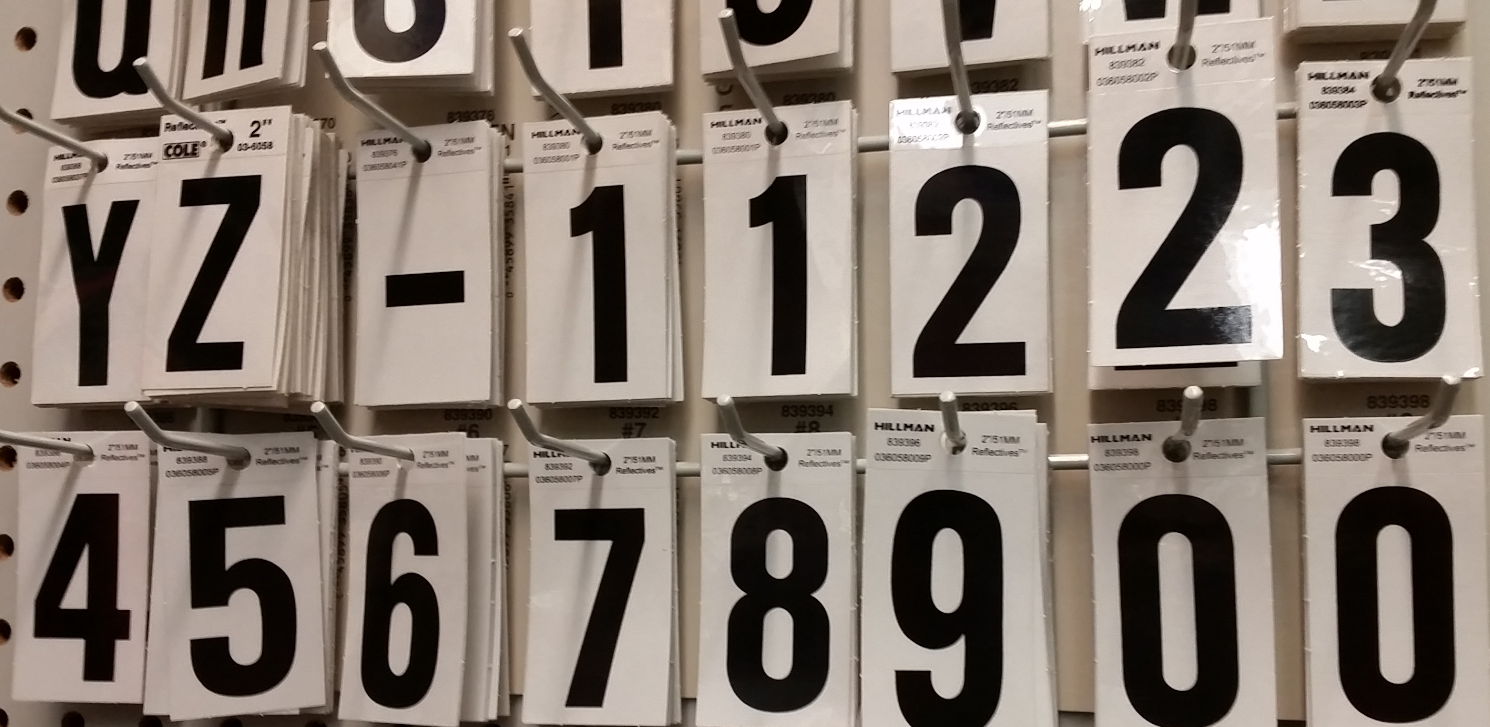Benford’s Law at Lowe’s

I recently installed a replacement mailbox and post, so off I went to Lowe’s to shop for address number decals to affix to new mailbox. When I located the pegboard hooks holding the numbers, as a quant, I immediately noticed something. What do you see in this picture?
Why do the digits 1 and 2 get two slots, while the higher digits only get one?
Why, it’s Benford’s Law of course!
From Wikipedia, Benford’s Law “states that in many naturally occurring collections of numbers the small digits occur disproportionately often as leading significant digits.” And, “it has been shown that this result applies to a wide variety of data sets, including electricity bills, street addresses, stock prices, population numbers, death rates, lengths of rivers, physical and mathematical constants.”
Perhaps the best application of this law is in fraud detection. The next time you submit that expense report, consider the fact that an algorithm could be checking your reports against this equation, which represents the probability of each leading digit occurring:
Hopefully your expense entries don’t deviate too far from the expected probabilities! Otherwise, you could be flagged as suspicious.


